Recent Water Damage Posts
The Role of Professional Restorers in Emotional Recovery: Restoring More than Just Physical Damage
1/18/2024 (Permalink)
When homes are affected by disasters such as floods, fires, or storms, the emotional toll on homeowners can be immense. In addition to the physical damage, there are often feelings of loss, grief, and uncertainty. In this blog, we will explore the crucial role that professional restorers play in the emotional recovery process for homeowners.
Creating a Sense of Safety and Security
Professional restorers understand the importance of providing a safe and secure environment for homeowners during the restoration process. By promptly assessing the damage, securing the property, and implementing necessary measures to prevent further harm, restorers help alleviate anxiety and restore a sense of stability.
Empathetic Support and Compassion
Emotional recovery requires empathy and understanding. Professional restorers recognize the emotional distress that homeowners go through after a disaster and provide compassionate support. They listen to homeowners' concerns, answer their questions, and offer guidance throughout the restoration journey.
Clear Communication and Transparency
Effective communication is vital throughout the restoration process. Professional restorers ensure clear and open communication, keeping homeowners informed about the progress, timelines, and any challenges they may encounter. Transparent communication helps homeowners regain a sense of control and reduces unnecessary stress.
Restoring Cherished Belongings and Memories
Disasters can cause damage to irreplaceable personal belongings and cherished memories. Professional restorers utilize specialized techniques and equipment to salvage and restore as many items as possible, including photographs, heirlooms, and sentimental objects. This restoration not only helps preserve physical items but also helps heal emotional wounds.
Collaborations with Mental Health Professionals
Recognizing the complex emotional impact of disasters, professional restorers often collaborate with mental health professionals. This partnership ensures that comprehensive support is available to homeowners, addressing both the physical and emotional aspects of recovery. Together, they create a supportive network to help homeowners cope with the emotional challenges they face.
Restoring the Comfort and Familiarity of Home
The restoration process goes beyond fixing physical damage. Professional restorers strive to recreate the comfort and familiarity of home for homeowners. By restoring the aesthetics, functionality, and livability of the space, they help homeowners regain a sense of normalcy and facilitate the emotional healing process.
In times of disaster, professional restorers play a vital role in not only restoring physical damage but also supporting homeowners in their emotional recovery. Through creating a sense of safety, providing compassionate support, restoring cherished belongings, collaborating with mental health professionals, and recreating the comfort of home, they help homeowners navigate the emotional journey towards healing.
For professional water damage services and expert guidance on cleaning water damage, contact the experts at SERVPRO®. We have the equipment and experience to make your property new again.
Standing Water. Understanding the Dangers of Standing Water in Homes
10/4/2023 (Permalink)
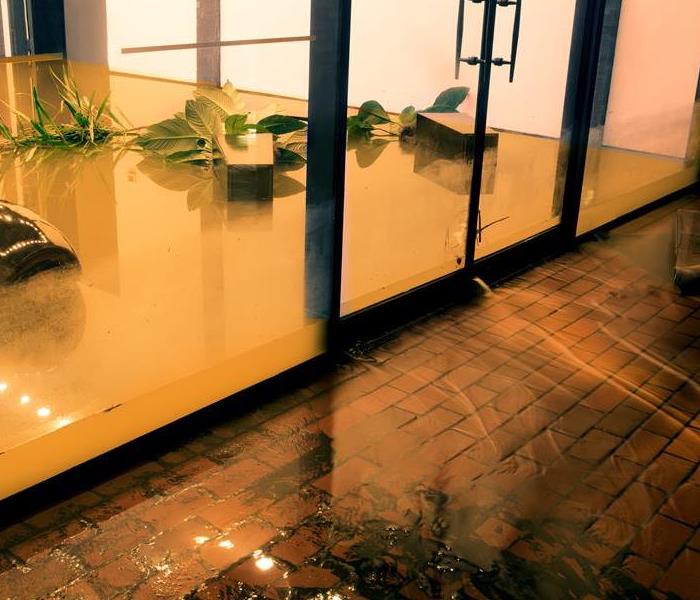 Standing water in your home may bring a range of dangers and risk.
Standing water in your home may bring a range of dangers and risk.
Standing water in homes can seem harmless at first glance, but it poses serious dangers and personal risks that should not be underestimated. Whether it's a result of a leaky pipe, a flooded basement, or a natural disaster, standing water can have far-reaching consequences for both your health and your property. In this blog post, we will explore the potential dangers and personal risks associated with standing water in homes, highlighting the importance of prompt action and proper mitigation.
Electrical Hazards
One of the most significant dangers of standing water is the risk of electrical hazards. When water comes into contact with electrical systems, it can cause power surges, short circuits, or even electrical shocks. This poses a serious threat to your safety, as it can lead to severe injuries or, in the worst-case scenario, electrocution. It is crucial to avoid contact with standing water in these situations and immediately shut off the electricity supply to the affected area.
Slip and Fall Accidents
Standing water can make floors extremely slippery, increasing the likelihood of slip and fall accidents. Whether it's a small puddle or a larger area of water accumulation, it can be difficult to maintain balance and stability. Slip and fall accidents can result in painful injuries, such as sprains, fractures, or head trauma. To reduce the risk of these accidents, it is essential to limit access to areas with standing water and, if possible, remove the water or block off the area until it is safe.
Structural Damage
Prolonged exposure to standing water can cause significant damage to the structure of your home. It can weaken the foundation, compromise the integrity of walls and floors, and promote the growth of mold. This can lead to costly repairs and, in extreme cases, render your home unsafe for habitation. Acting quickly to remove standing water and thoroughly drying affected areas is essential to prevent long-term structural damage.
Secondary Damage and Mold Damage
Standing water creates an ideal environment for the growth of mold and other harmful bacteria. Mold thrives in damp conditions and can quickly spread throughout your home and can affect air quality. It is crucial to address standing water situations promptly to prevent mold growth and keep your family's health protected. Standing water can become contaminated with various hazardous substances, including sewage, chemicals, or bacteria. It is essential to exercise caution and seek professional help when dealing with contaminated water.
While standing water in homes may initially seem harmless, it brings with it a range of dangers and personal risks. From electrical hazards and slip and fall accidents to structural damage, the consequences of ignoring or mishandling standing water can be severe. Immediate action, including shutting off electricity, removing water, and proper mitigation, is crucial to protecting your safety, the integrity of your home, and your family's well-being. Remember, swift intervention and professional assistance are vital when dealing with standing water incidents to ensure a safe and healthy environment for everyone in your home.
Understanding Water Heater Leaks
7/28/2023 (Permalink)
Discovering a water heater leak can be a cause for concern and can lead to water damage if not addressed promptly. A leaking water heater not only wastes water but also indicates an underlying issue that needs attention. In this blog, we will explore common causes of water heater leaks, the potential risks they pose, and possible solutions to resolve the problem.
Pressure Relief Valve
The pressure relief valve is designed to release excess pressure from the water heater. If it's faulty or malfunctions, it can cause leaks. Check for any water dripping or pooling around the valve. If you notice a leak, it's essential to replace the valve to prevent further issues.
Similar to the pressure relief valve, the T&P valve helps regulate temperature and pressure within the water heater. If it malfunctions, excessive pressure can build up and result in leaks. Testing and replacing a faulty T&P valve should be done by a qualified professional.
Corrosion and Rust
Over time, water heaters can develop corrosion and rust, especially in older units or areas with hard water. Corroded parts, such as the tank or pipes, can lead to leaks. If corrosion is the cause, replacing the affected parts or the entire unit may be necessary.
Water heaters have various connections for incoming and outgoing water supply. If these connections become loose or damaged, they can cause leaks. Inspect all connections, including inlet and outlet pipes, and tighten or replace any faulty components.
Drain Valve Issues
The drain valve is located at the bottom of the water heater and is used for flushing out sediment and performing maintenance. If the drain valve is loose, damaged, or not fully closed, it can lead to leaks. Tighten or replace the drain valve to address the issue.
In rare cases, the internal tank of a water heater may develop cracks or damage. This can be caused by excessive pressure, corrosion, or manufacturing defects. If the tank is damaged, it's crucial to replace the entire unit to prevent significant water damage.
High Water Pressure
Excessively high water pressure can put a strain on the water heater, leading to leaks. Consider installing a pressure regulator to maintain optimal water pressure and protect the integrity of your water heater.
Improper Installation or Maintenance
Incorrect installation or inadequate maintenance can contribute to water heater leaks. Ensure that your water heater is installed by a professional and that it receives regular maintenance, including flushing to remove sediment buildup.
A water heater leak can be a sign of underlying issues that need attention. Understanding the causes, such as pressure relief valve malfunction, corrosion, loose connections, drain valve problems, internal tank damage, high water pressure, or improper installation, is key to addressing the problem effectively. If you notice a water heater leak, it's essential to take immediate action to prevent water damage and potential hazards. Consult a professional plumber to assess the situation, make necessary repairs, or recommend a replacement if required. Regular maintenance and periodic inspections can also help prevent leaks and prolong the lifespan of your water heater.
A water leak could cost you thousands
3/7/2023 (Permalink)
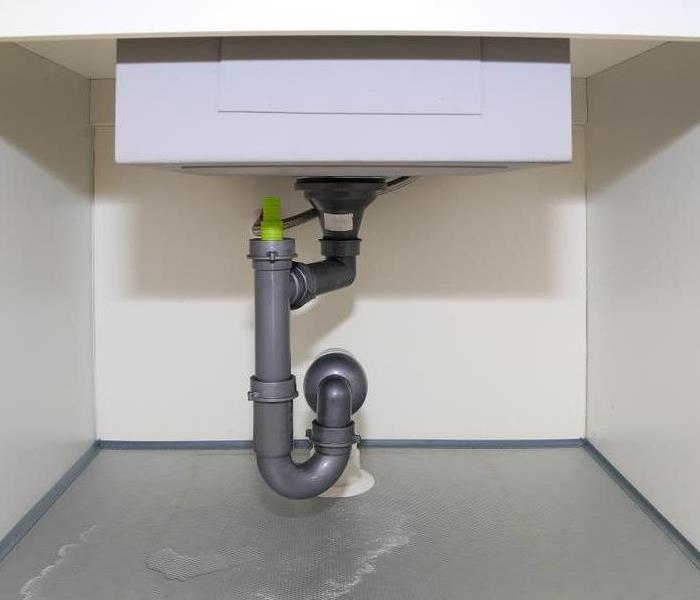 If you suspect a leak, give SERVPRO a call
If you suspect a leak, give SERVPRO a call
Water leaks are a serious issue for homeowners. They can lead to costly repairs, damage, and wasted water. You may think that you have a small drip somewhere in your house, but if the problem is not fixed promptly it could become something much bigger than you ever imagined.
Water leaks can go undetected for a long time.
Water leaks can go undetected for a long time. If you suspect a leak, call the professionals to help detect where the leak is coming from. Water leaks can cause extensive damage and waste thousands of gallons of water annually, leading to costly repairs and damage.
A water leak can lead to costly repairs and damage.
Water damage is not always obvious, and a small leak can cause significant damage over time. A water leak is the most common cause of mold in homes. When you have a leak in your home, mold can grow on walls, ceilings and floors, this can lead to secondary damages that could add up along the way as well. It may also cause structural issues in your home if left untreated.
Water leaks are often caused by aging plumbing systems as well as worn out faucets/taps. There are other ways that leaks could sneak up on you, including leaking pipes damaged by other construction or just normal wear and tare of the pipes themselves.
A leak wastes thousands of gallons of water annually.
If you have a leak, you are likely wasting thousands of gallons of water annually. A small drip can add up to hundreds of dollars in wasted water over time. A small drip is an obvious ones, but there are plenty more places where leaks can occur and go unnoticed until they're too late.
If you suspect a leak, contact your plumber immediately.
If you suspect a leak, contact your plumber immediately. Don't try to fix it yourself. To find the source of a leak, a plumber will use special tools and techniques. They can use water pressure gauges that measure how much water is flowing through pipes. Ultrasonic devices that send out ultrasonic sound waves and then measure how long it takes for the sound to bounce off different parts of your plumbing system. This allows them to detect leaks easily, even if they're hidden inside walls or floors or behind cabinets or appliances. Electromagnetic induction testers that detect electrical currents in metals like copper pipes so you can tell if there's any corrosion on them which can lead to a leak.
If you suspect that you have a leak, it is best to contact a plumber immediately. Leaks can be hard to find and may go undetected for months or even years. The sooner you get them fixed, the better off you'll be! Give SERVPRO a call if your home has suffered a water loss due to a water leak.
What To Do About Water in Light Fixtures
12/1/2022 (Permalink)
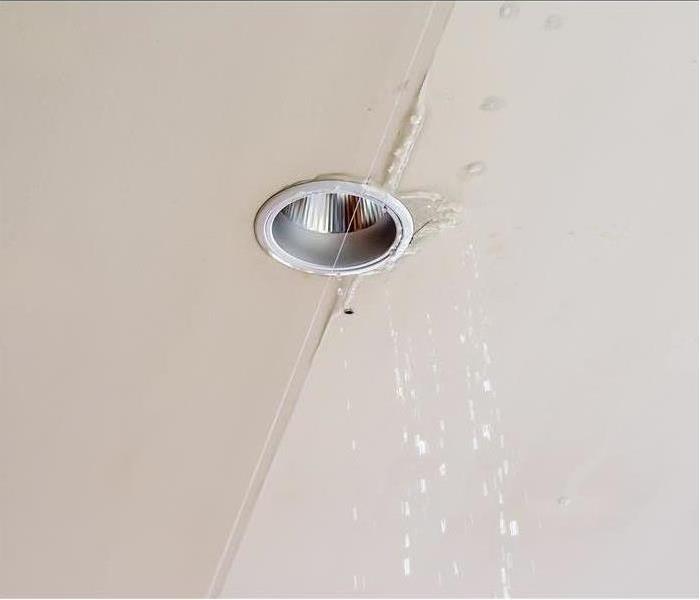 Water in light fixtures often indicates larger problems with your home's roof or plumbing
Water in light fixtures often indicates larger problems with your home's roof or plumbing
What To Do If This Occurs In Your Home
Water damage can manifest in a variety of ways, including water in light fixtures. The following steps outline what to do if this occurs in your Affton, MO, home.
1. Disconnect the power and water. This step is crucial for ensuring your safety. Go to the breaker box and cut off the power to the area of the house where the water-damaged light fixture is located. Do not touch the fixture or light switch until the power is off. Next, turn off the primary water valve. If you are able to locate the main valve inside the home, cut off that one. It should be on the side of the house facing the street. If you cannot find that valve, go outside and turn off the water at the valve near the meter. The meter and valve are usually located under a metal panel near the street.
2. Address the source of the water and dry the property. When the power and water are off, you can work on preventing more damage from occurring. The ceiling damage that leads to water in light fixtures generally occurs as a result of a pipe or roof leak. You may have to tarp over the roof or call a plumber for help fixing a pipe break. If there is standing water, dry it up using a wet/dry vacuum, pump or buckets. A certified restoration service can help with drying out standing water, but it is important to act quickly to avoid further damage and mold growth.
3. Call an electrician. Hire a professional electrician to replace the light fixture. They have the skills to do this safely. Do not turn the power back on and do not work on the light fixture yourself.
Water in light fixtures often indicates larger problems with your home's roof or plumbing. Fortunately, there are professionals, including electricians and plumbers, that can help you with all of these issues.
How To Prevent Water Damage To Your Home
11/12/2022 (Permalink)
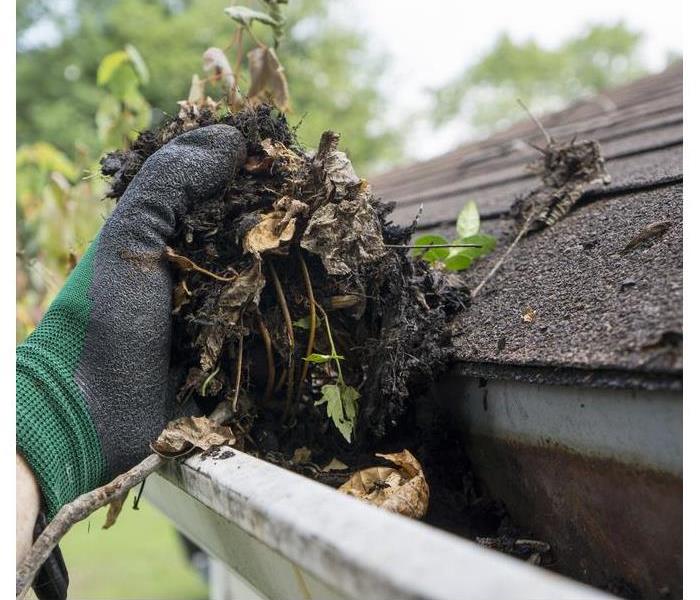 Keep rain gutters clear
Keep rain gutters clear
How To Protect Your Home From Water Damage
Water damage is a serious problem that can lead to mold and mildew growth, as well as costly repairs. In some cases, it can even be dangerous if it goes unchecked for too long. Thankfully, there are things you can do to prevent water damage in your Webster Groves, MO home. By following these tips and being mindful of your surroundings, you will be able to keep your home safe from any unwanted moisture problems:
How Can Water Damage Affect Homes?
Water damage can cause serious problems in your home. The effects of water on your home's structure, as well as the mold that grows after this damage has occurred, are very serious and can lead to costly repairs or even complete replacement of the damaged areas.
Water can quickly cause electrical issues in your house. In some cases, electricity may have been running through an area before it was flooded with water, causing short circuiting or other electrical issues. This could pose a fire hazard or even be fatal if there is no way for you to get out of the house once trapped inside due to malfunctioning doors or windows which cannot open properly thanks to water damage.
Keep Rain Gutters and Downspouts Clear
A clean and secure gutter system should be your first line of defense against water damage. Cleaning gutters regularly will ensure there are no tree branches, leaves or other debris that could become lodged in the downspout. If you notice a buildup of dirt or grime on your roof, it’s time to clean your gutters.
If you have clogged or damaged gutters, water can leak into your home through both corners that meet at an angle (called valley joints). In addition to keeping them clean and free of debris, it’s also important to have any broken sections repaired immediately so they don’t lead to leaks later.
Do Not Leave Dishwashers or Washing Machines Running When You Are Not Home
If you leave the washer or dishwasher running while you are not home and something goes wrong, it will cost thousands of dollars to repair the damage. You may think this is an unlikely scenario, but it happens more often than you think. Many people have experienced massive flooding in their homes because they left their washing machine running empty or did not properly secure their dishwasher door when they were done with a load of dishes. The best way to prevent this from happening is by following the simple rule that if any appliance has water flowing through it when you leave your house, turn off the water supply before leaving so nothing can leak out during your absence
Check Pipes and Hoses For Cracks or Leaks
You can do this by turning off the valve at the meter or basement floor and looking for drips or pools of water. You should be able to hear a leak, but if you can't then try placing a dish towel where you suspect there might be one and wait for it to absorb any moisture that may have gathered there. If it does, then you know that's where your leak is. If not (or if there isn't any moisture), then turn on the faucet; if no water comes out after 10 minutes of waiting, then check all places where pipes could possibly lead into the walls (ex: behind toilets).
Check your heating system once every month during winter months so that you're ready to fix broken parts before they cause bigger problems down the road!
Check Around Your Water Heater
A leaky water heater is usually the first sign of a water problem in your home. It's important to check around your water heater and look for signs of water on the floor underneath it. If there is no drain, it's possible to create one by drilling a hole into an exterior wall, running PVC pipe through it, and connecting it to an existing drain.
If you find that your tank is leaking or cracked, then replacing just the tank may be enough. However, if this doesn't solve the problem then repairing cracks in pipes using epoxy can also work well.
When To Call a Professional
- When the damage is too extensive.
- If you are not sure what to do.
- If you are unsure of the source of the water.
- If you are not sure how to fix it.
It’s important to avoid water damage in your home as much as possible. If you notice any leaks or signs of water damage, call a professional immediately.
Business Insurance Is a Lifesaver When Recovering From Water Damage
8/15/2022 (Permalink)
 Business insurance policies alleviate tension from financial costs and massive restoration projects.
Business insurance policies alleviate tension from financial costs and massive restoration projects.
Three Reasons To Invest In The Policy
When saturation impacts commercial property, an owner may feel lost and exasperated trying to pick up the pieces. The premises are in danger of developing mold, rot and structural deterioration; thus, the exposure and lingering water damage demand prompt and methodical care to ensure the establishment in Webster Groves, MO, can reopen, free of hazards. Business insurance may be the lifeline needed to stay in operation and survive the repairs.
1. Receive Necessary Financial Support
Proprietors may face complete building overhauls. Remediation includes tearing out walls and flooring, purifying the air and vent system and tending to the source of trouble. The entire space must be disinfected and dried. These tasks add up to thousands of dollars, which owners may not have immediate access to. Many insurance policies cover the harm broken pipes caused. Owners pay a deductible amount; insurance, then, fronts the cost for everything else (within the coverage range). Also, merchandise and electronics may be harmed. Personal loss coverage allows for a check to replace or salvage these items.
2. Secure Authorized, Certified Assistance
Water damage treatment isn't easy, and inadequate cleanup could lead to future complications and additional bills. The insurer insists on proper methods, including the hiring of a reputable, certified water remediation company. The experts hold IICRC credentials, national professional standards, which layout a framework for meticulous care. In addition, Commercial Drying Specialists investigate the impacted sections. These workers have taken additional classes to understand the best processes to dry and sanitize the space. They can organize an effective plan and determine which technology to use to air out the area.
3. Enjoy Backup Reviews
Water cleanup errors or missteps could permit mold to grow or structures to fail. The insurer looks over the bills, damages and estimates to see that all necessary steps occur. An extra set of eyes is support to avoid more issues.
Business insurance policies alleviate tension from financial costs and massive restoration projects. Having it to help with water damage is an absolute must.
Tips for Drying Water Damage
7/20/2022 (Permalink)
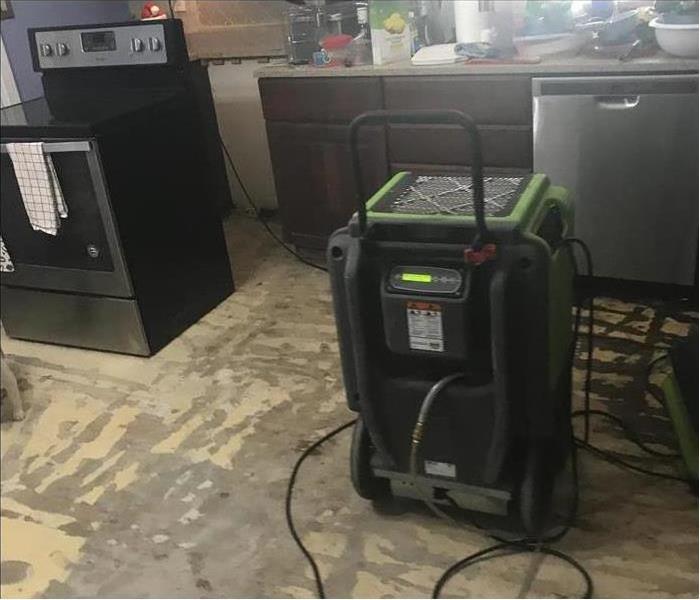 A dehumidifier helps remove the water in your home by evaporating water in the area.
A dehumidifier helps remove the water in your home by evaporating water in the area.
Removing Water Damage
Water in your home or water in your business should be dried as quickly as possible after water damage has been assessed. Here are a few different ways you can try drying out after flood damage though you may want to hire an experienced water damage restoration company. Water cleanup can be harder than you think.
Drying Quickly
Mitigation of your water damage should be complete within 48 hours if you want to salvage your goods while avoiding mold and rust. If you're in an area that has low humidity, Start drying immediately by opening all the windows and doors to help with with air movement. Also, over all the closets and cabinets and all the drawers.
Dehumidifier
A dehumidifier helps remove the water in your home by evaporating water in the area. When you start using the dehumidifier close all the windows and doors. Since this will reduce air movement, you should find a couple of powerful fans capable of higher rates of air movement and place them throughout the area.
Removing Standing Water
A pump can be purchased to aid in water cleanup. If flood damage has left a large amount of water in your business, that water damage can be minimized if you work quickly. Mitigation can continue with a wet/dry shop vac. You can suck up water on the floor and even aid in the drying process with it.
Getting Rid of the Trash
Water damage causes many of your belongings to become ruined. You will have to remove all these objects during your water cleanup process can begin. Water damage restoration can't be completed until the drying is complete. Remove wet furniture and rugs to an area where they can get the sun and natural air movement. Remove any vinyl flooring that was victim to flood damage. Make sure you dispose of wet insulation as well.
Go With a Professional
Water damage and flood damage can be combated with silica gel packets that absorb moisture. Water damage restoration companies will be more efficient at removing water in business settings. Make sure that you contact someone right away.
Mitigation of both your water damage restoration project and water cleanup project can be taken into your hands, but it is smarter to hire a professional who has experience removing water in homes and water in businesses. If you don't do the job well enough, your house may end up being uninhabitable. Mitigation of the project should begin as soon as possible.
How to Prevent Freezing Pipes
7/2/2022 (Permalink)
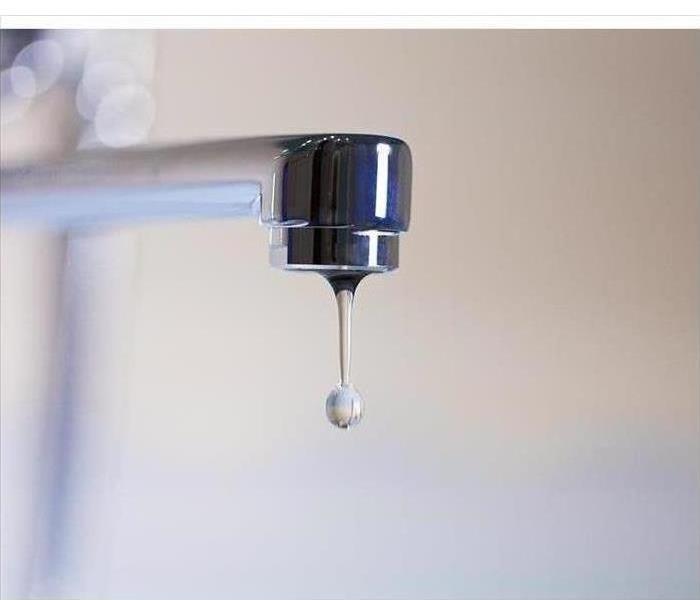 Allow your faucet to drip.
Allow your faucet to drip.
Avoid Frozen Pipes
Imagine hundreds of gallons of water flooding into your home. Frozen pipes can lead to this disastrous scenario due to the pressure that freezing water puts on a pipe that can’t expand; pressures can rise to over 2,000 pounds per square inch. So, pipe freeze prevention is crucial when you live in a climate that sees temperatures reach 20 degrees or below. Avoid frozen pipes by:
1. Letting Faucets Drip
If temperatures are expected to drop to 20 degrees or below, you should turn your indoor faucets on a slow drip. The constantly moving water keeps pressure from building up in the pipes.
2. Leaving Cabinet Doors Open
Every little amount of heat helps during extremely cold temperatures. Open cabinet doors to sinks to expose the pipes to the warmer air of the home. Also, leave the door open to any rooms that have plumbing but no air vents; these pipes are especially susceptible to freezing.
3. Wrapping Pipes
There are several ways to warm pipes. Electrical heat tape is the most effective method of pipe freeze prevention. It should be chosen for the most extreme climates. Thermostatically-controlled heat tape will automatically turn on when temperatures drop below a certain point.
4. Insulating Pipes
Foam insulation works well for more moderately cold climates. Foam insulation is easy to install; it’s usually just placed over the pipe.
5. Heating Unheated Areas
Unheated areas need to be heated to at least 40 degrees to keep pipes from freezing. However, portable heaters should never be left unattended, so it’s best to have a permanent heater installed.
6. Removing Hoses
Hoses that are attached to outdoor hose bibbs or sillcocks should be detached before the temperatures reach freezing. The water should be shut off to the faucet and the water drained.
Pipe freeze prevention is one of the most important proactive measures you can take during the cold weather months. If your Webster Groves, MO, home experiences a burst pipe, water damage cleanup experts can return it to its preloss condition.





 24/7 Emergency Service
24/7 Emergency Service






